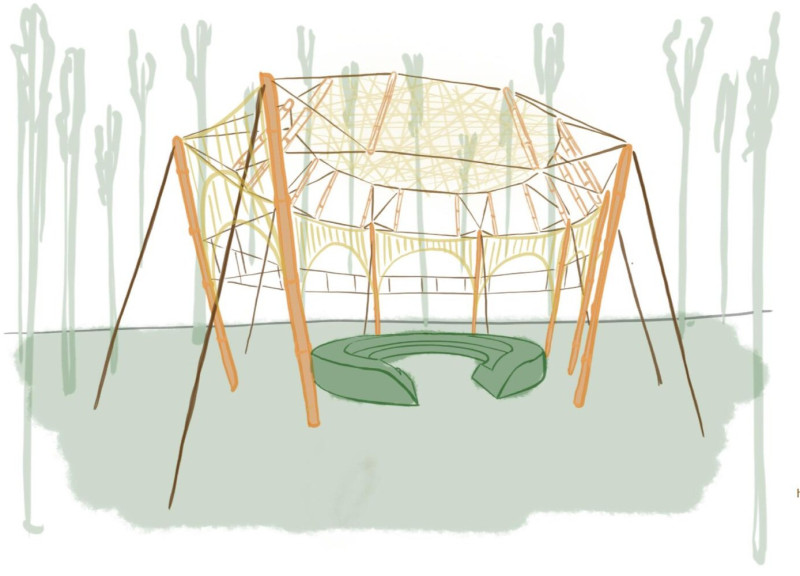5 key facts about this project
The Arashiyama Bamboo Grove project is located near Kyoto, Japan. It creates an experience that connects architecture with nature. Functioning as an educational facility, it highlights the versatility of bamboo while strengthening ties to local cultural traditions. The design concept emphasizes sustainability and encourages community involvement, merging traditional building techniques with contemporary ideas.
Architecture Concept
The structure is designed to blend with its environment. By focusing on bamboo as the main material, the project aims to honor the material's historical significance in the area. A tensegrity roof frame works alongside the woven bamboo canopy to demonstrate the unique properties of bamboo, reflecting a commitment to innovative construction methods.
Materials and Sustainability
Positioned near a source of Moso Bamboo, the project reduces transportation needs, which supports its sustainable goals. Local laborers participate in the construction, using traditional methods and hand tools. This approach not only engages the community but also preserves valuable local skills. The design utilizes bamboo in both tension and compression, ensuring that environmental impact is kept to a minimum throughout the building's life.
Structural Innovations
The pavilion's support system features a tensegrity mesh held up by struts attached directly to the ground. This method minimizes the need for connections between load-bearing elements, enhancing the stability and eco-friendliness of the structure. Bamboo foundations are hand-dug, reinforcing the commitment to environmentally conscious construction practices.
Visitor Experience
Inside, the building offers a “nature observation hut” experience, allowing visitors to engage with the surrounding forest. Local volunteers guide these interactions, sharing knowledge about bamboo's uses in food, textiles, and tools. This educational aspect enriches visitors’ understanding of bamboo, celebrating its significance in both history and modern living.
The form of the pavilion invites the landscape into its space. Natural light filters through the bamboo structure, creating an atmosphere that encourages reflection and appreciation of the forest.



















































